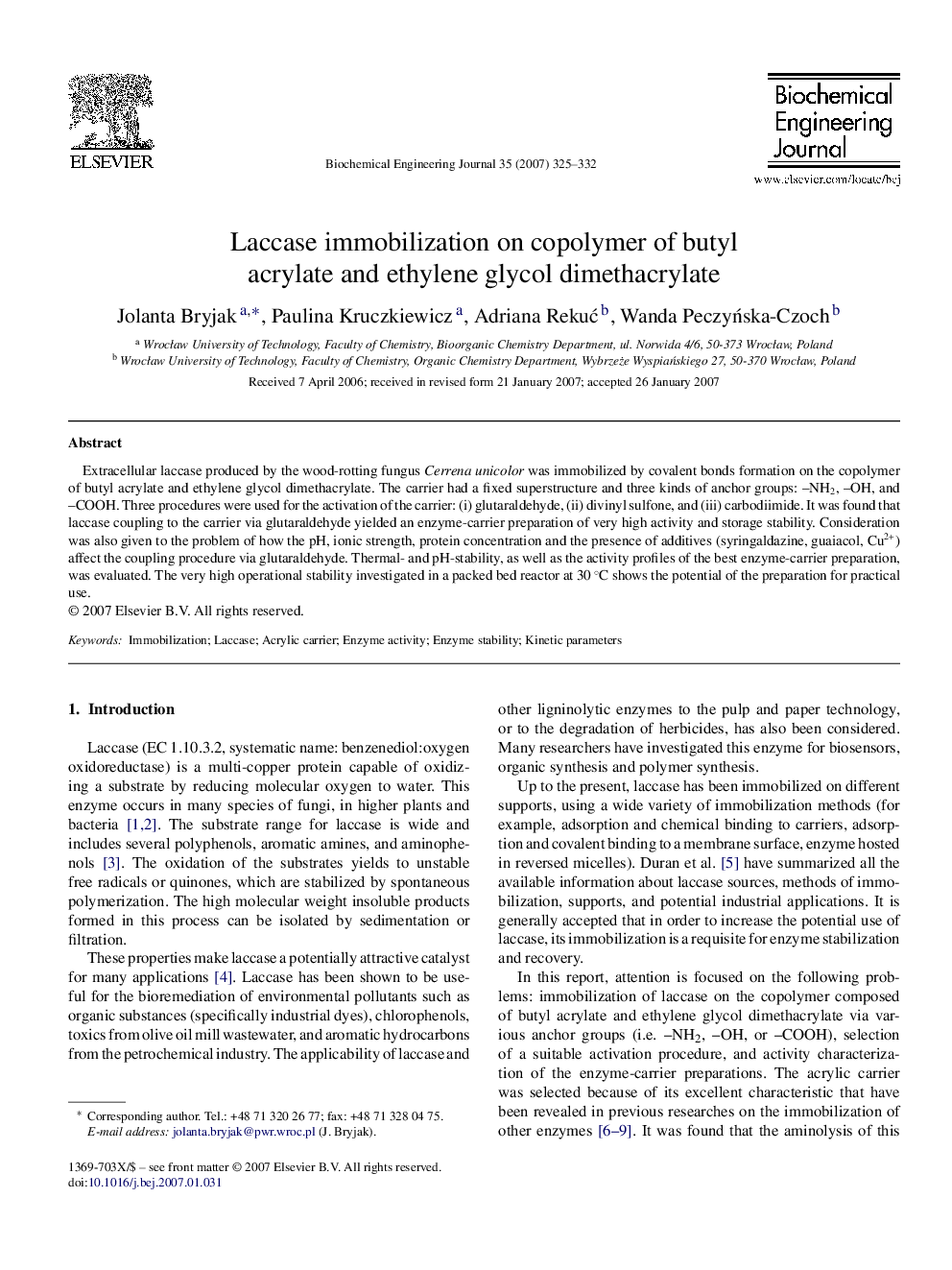| Article ID | Journal | Published Year | Pages | File Type |
|---|---|---|---|---|
| 4707 | Biochemical Engineering Journal | 2007 | 8 Pages |
Extracellular laccase produced by the wood-rotting fungus Cerrena unicolor was immobilized by covalent bonds formation on the copolymer of butyl acrylate and ethylene glycol dimethacrylate. The carrier had a fixed superstructure and three kinds of anchor groups: –NH2, –OH, and –COOH. Three procedures were used for the activation of the carrier: (i) glutaraldehyde, (ii) divinyl sulfone, and (iii) carbodiimide. It was found that laccase coupling to the carrier via glutaraldehyde yielded an enzyme-carrier preparation of very high activity and storage stability. Consideration was also given to the problem of how the pH, ionic strength, protein concentration and the presence of additives (syringaldazine, guaiacol, Cu2+) affect the coupling procedure via glutaraldehyde. Thermal- and pH-stability, as well as the activity profiles of the best enzyme-carrier preparation, was evaluated. The very high operational stability investigated in a packed bed reactor at 30 °C shows the potential of the preparation for practical use.
